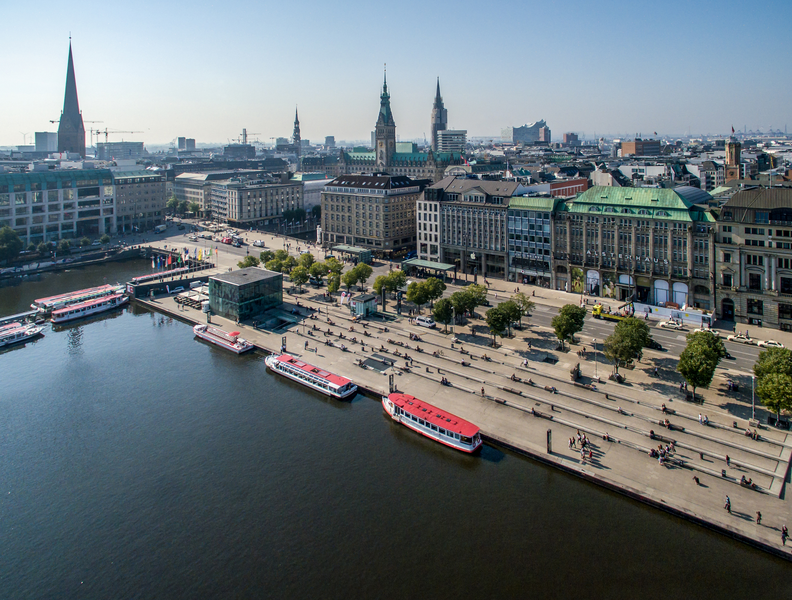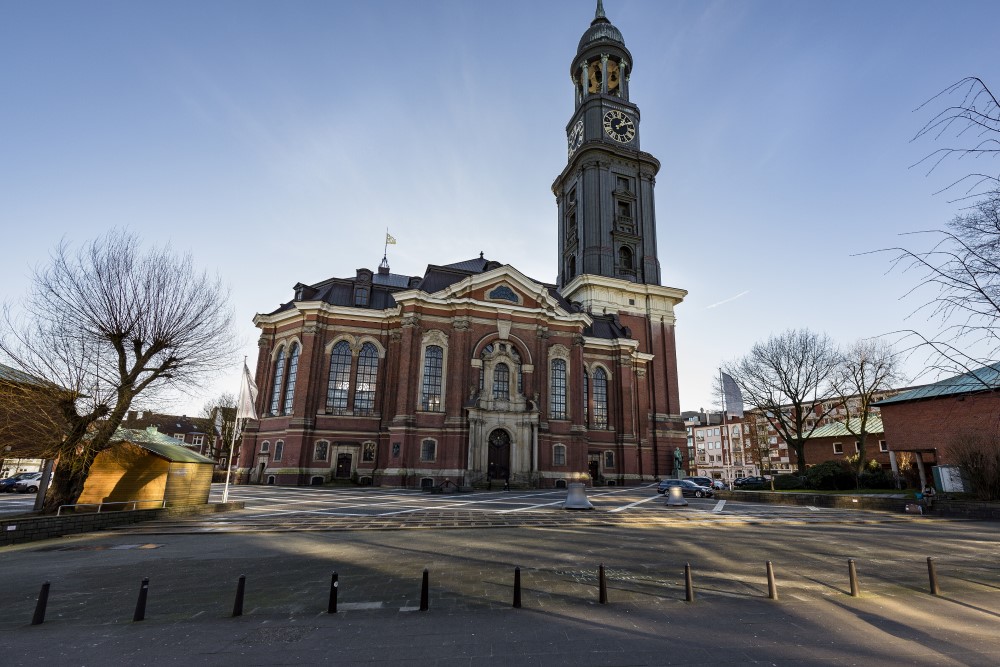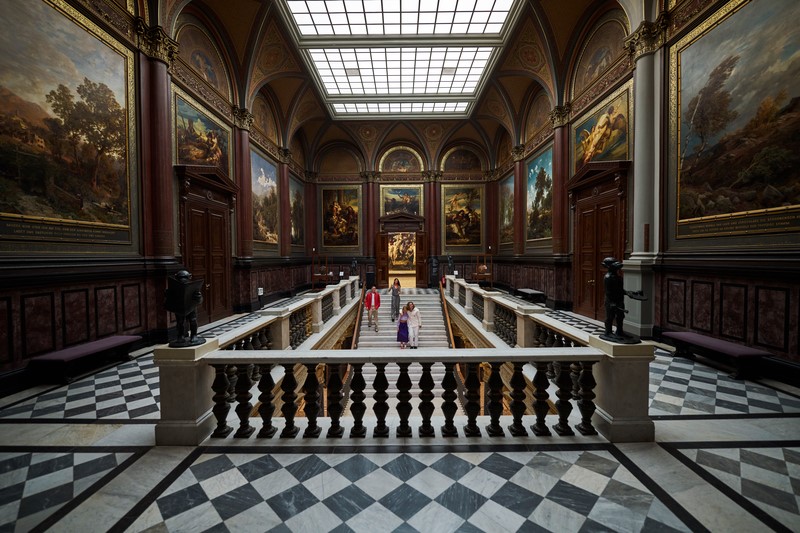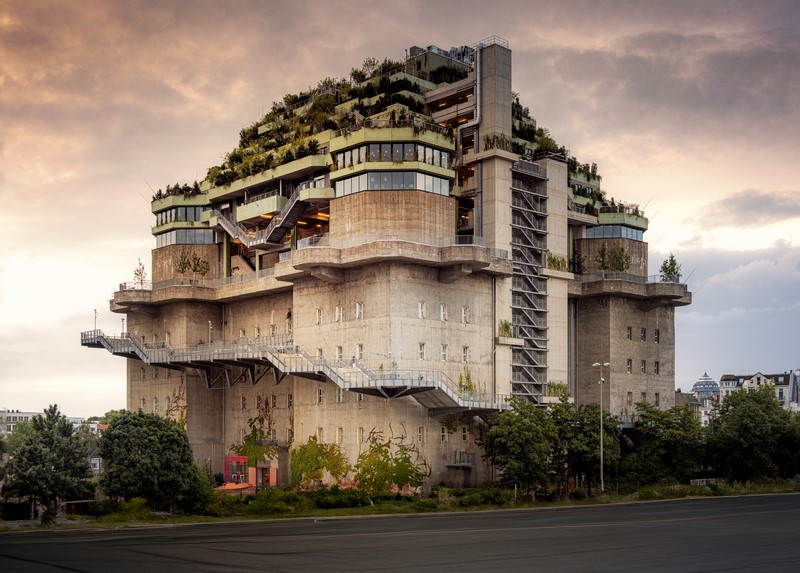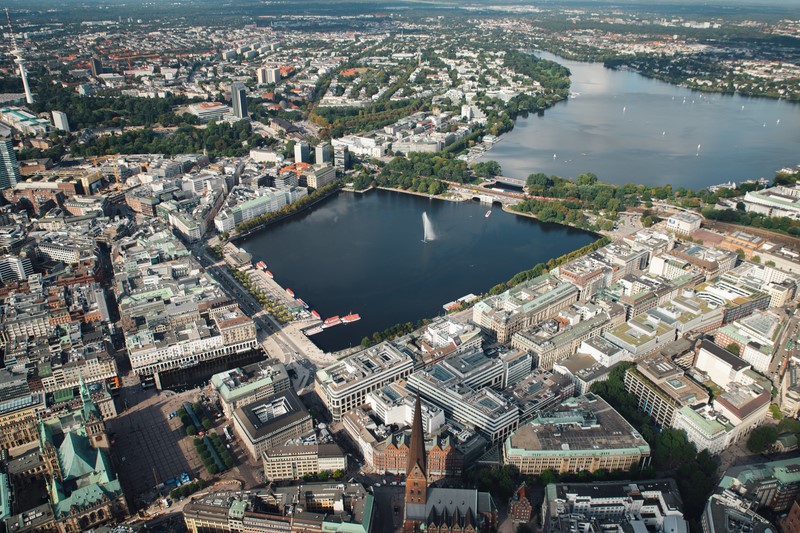

Hamburg is a major port city in northern Germany, renowned for its rich maritime history and vibrant cultural scene. The city offers a blend of historic architecture and modern developments, featuring bustling harbours, museums, theatres, and parks. Famous for its intricate network of waterways and numerous bridges, Hamburg boasts lively neighbourhoods that make it a popular destination for both business and tourism.
Hamburg is home to 1.8 million inhabitants and is Germany’s second largest city (after Berlin).
Speicherstadt (Warehouse District) & HafenCity
Speicherstadt is a historic warehouse district built in the late 1800s. It’s known for its red-brick buildings, canals, and bridges. It is part of a UNESCO World Heritage Site, recognised for its unique architecture and historical importance.
Nearby is HafenCity, a modern urban area with new offices, apartments, shops, and museums. Together, they show Hamburg’s mix of old and new architecture and are popular places to visit.
Chilehaus
Chilehaus is a famous office building built in the 1920s, known for its sharp, ship-like shape and striking brick design. Designed by Fritz Höger in the Brick Expressionism style, it features over 4 million bricks and artistic details.
It became a UNESCO World Heritage Site in 2015 and is now used for offices, shops, and cafés.
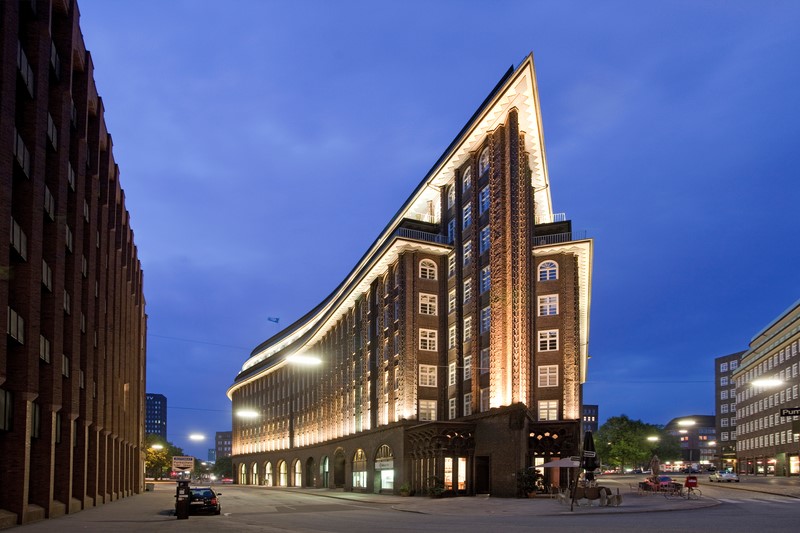
Miniatur Wunderland
Miniatur Wunderland is the world’s largest model railway exhibition, located in the Speicherstadt district. It features detailed miniature worlds from places like Germany, the USA, Italy, and Scandinavia, with moving trains, cars, planes, and over 290,000 tiny figures. Lights change from day to night every 15 minutes, and visitors can press buttons to activate scenes. It’s fun for all ages and very popular, so booking ahead is recommended.
It is open 365 days a year, always at least from 9.30AM to 6.00PM. On weekends, public holidays, school vacations, and Tuesdays, it often stays open longer.
Ticket prices are €20 for adults, €12.50 for children under 16, and free for children under 1 metre tall.
For more information, visit https://www.miniatur-wunderland.com/.
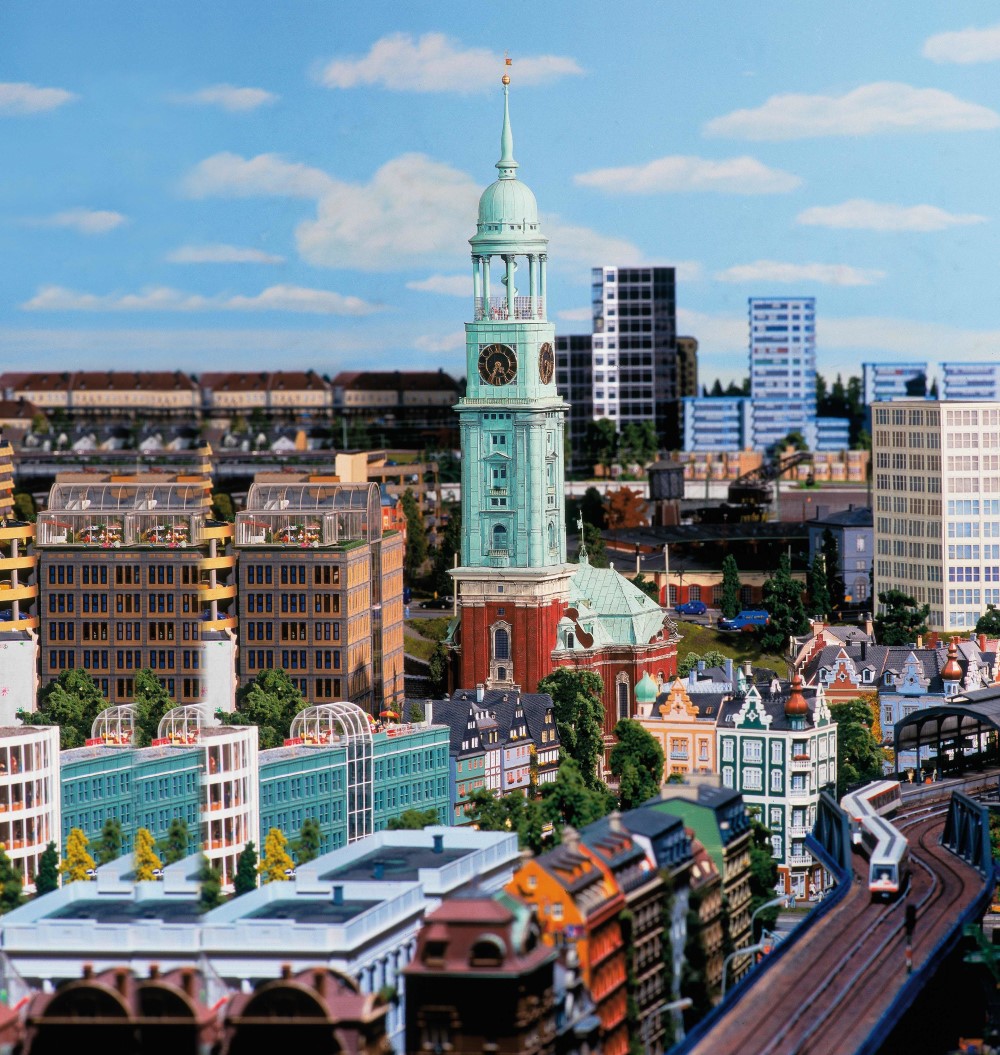
Elbphilharmonie Concert Hall
The Elbphilharmonie is a modern concert hall, built on top of an old warehouse by the Elbe River. It opened in 2017 and is known for its wave-shaped glass design and excellent acoustics. Visitors can attend concerts or enjoy city views from the Plaza.
The Plaza is open to the public and offers 360° panoramic view of the harbour and the city. Entry to the Plaza is free, but you need to collect a ticket at the ticket office in front of the entrance.
For more information, visit https://www.elbphilharmonie.de/en/.
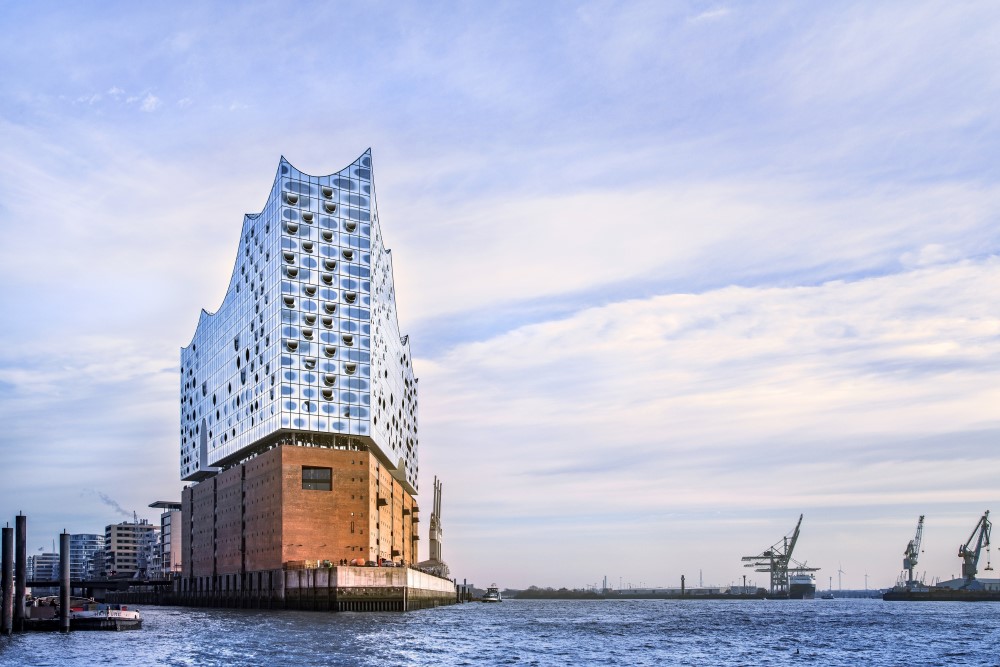
Port de Lumieres
Port des Lumières is a large, permanent immersive art exhibition opened in 2025. Located in HafenCity, it uses light, sound, and movement to bring famous artworks to life, featuring exhibitions like Gustav Klimt and Hundertwasser. The space also includes a creative kids’ area and reflects Hamburg’s maritime heritage in its design.
It is open daily from 10am, closing at 6pm Sunday to Thursday and 9pm on Fridays and Saturdays. Ticket prices range from €9.90 for children under 15 to €18 for adults, with discounts for students, seniors, and families.
For more information, visit https://www.port-lumieres.com/en.
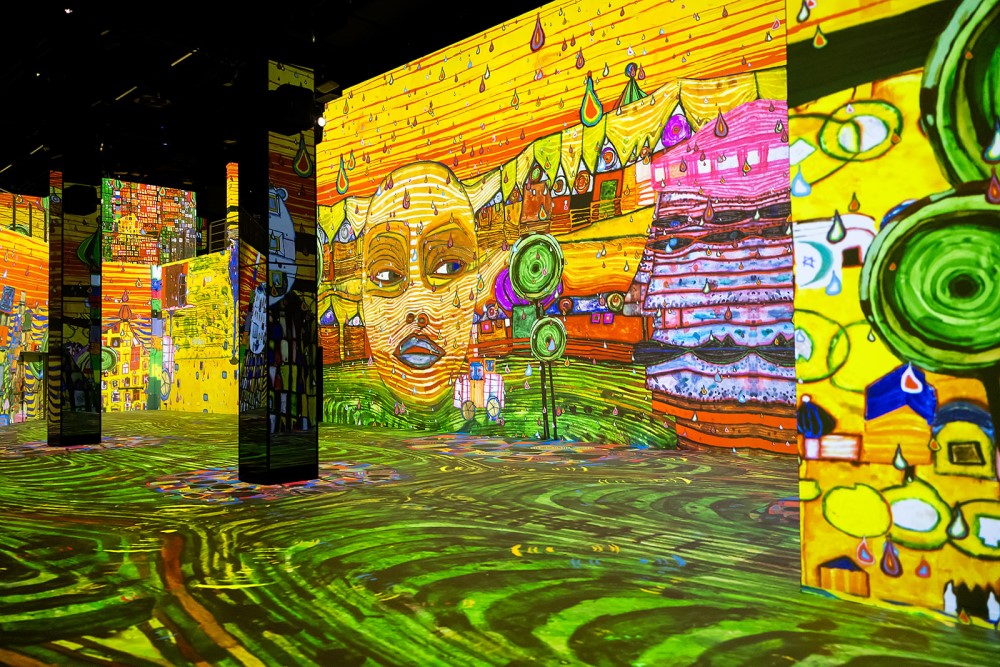
Jungfernstieg & Alster Lake
Jungfernstieg is a popular promenade and shopping street along the Inner Alster Lake. It’s a central spot for both locals and visitors to enjoy lake views, shop, and visit cafés. The area features luxury boutiques, elegant shopping arcades, and the historic Alsterhaus department store.
The nearby Alster Lake is a large urban lake ideal for boating, walking, and outdoor activities.
Harbour Boat Tour
Alster-Touristik operates boat tours on Hamburg’s Inner and Outer Alster lakes, using steamers, solar-powered, and electric boats. They offer various trips including city tours, canal cruises, and evening tours to see the city lights. English audio guides are accessible via Wi-Fi, though headphones are recommended. Tours operate throughout the year, and private charters are available.
The tours range from one to three hours in length, with adult tickets starting at €25.
For more information, visit https://alstertouristik.de/en/.
City Hall
Built between 1886 and 1897, Hamburg City Hall is the historic core of the Old Town by the Alster. This impressive neo-Renaissance building houses the city’s parliament and senate. Visitors can explore its grand halls on guided tours and admire its detailed façade, inner courtyard, and ornate interior rooms.
The City Hall is open Monday to Sunday from 8AM to 6PM, with several guided tours available to visitors. The Rathausmarkt in front of the City Hall is a popular venue for fairs, markets and concerts.
St. Michael’s Church (Michel)
St. Michael’s Church, known as the Michel, is one of Hamburg’s most famous landmarks. It is a large Baroque-style Protestant church with a distinctive copper-covered spire. The church dates back to the 17th century and offers visitors a tower with panoramic views of the city and harbour. It is also known for its beautiful interior and regular concerts. The church’s 132-metre-high tower features an observation deck at 106 metres, offering panoramic views of the city and harbour.
St. Michael’s Church charges €8 for adult admission to the tower and €6 for the crypt, with a combination ticket available for €10. Children aged 6 to 15 are charged €5 for the tower, €4 for the crypt, and €6 for the combination ticket.
A voluntary donation of €2 is requested for entry to the church itself.
For more information, visit https://www.st-michaelis.de/en/#main.
Reeperbahn & St. Pauli District
The Reeperbahn and St. Pauli district are famous for their vibrant nightlife, bars, clubs and theatres. Known as the city’s entertainment hub/red-light district, the area also features music venues, restaurants and shops. It has a lively atmosphere and is popular with both locals and tourists.
The Beatles have a strong connection to the St. Pauli district, where they played early gigs in clubs on the Reeperbahn during the early 1960s. The area still honours their legacy with museums, tours, and music venues celebrating their history.
Hamburger Kunsthalle
The Hamburger Kunsthalle is one of Germany’s most significant art museums, located near the Hauptbahnhof. Established in 1869, it houses a vast collection spanning eight centuries, including Old Masters, 19th-century works, and modern art from 1960 onwards. The museum comprises three main sections: the historic building, the Lichtwark Gallery, and the contemporary Gallery of Contemporary Art, designed by Oswald Mathias Ungers.
It is open Tuesday to Sunday from 10AM to 6PM, with extended hours until 9PM on Thursdays. It is closed on Mondays and certain holidays. Admission is €16 for regular tickets, €8 for students and eligible groups, and free for visitors under 18.
Free entry is offered for all on the first Thursday of each month from 6PM to 9PM.
For more information, visit https://www.hamburger-kunsthalle.de/en.
Planten un Blomen Park
Planten un Blomen is a 45-hectare public park, featuring gardens, ponds, and cultural attractions. It is open year-round, from 7AM to 11PM in May to September, and from 7AM to 8PM from October to April.
It is known for its Wasserlichtkonzerte, evening water-light shows held from May to September. The concerts combine fountains, lights, and classical music, last about 30 minutes, and take place at the park’s lake. Admission is free.
Eppendorf
Eppendorf is a stylish and affluent district known for its beautiful historic buildings, tree-lined streets, and green spaces like Hayn’s Park. It offers a lively atmosphere with boutiques, cafés, and restaurants, plus the famous Isemarkt market. The area also hosts the University Medical Centre Hamburg-Eppendorf, making it a popular and vibrant neighborhood.
The Isemarkt is a popular outdoor market held every Tuesday and Friday from 8.30AM to 2PM. Stretching under the U3 subway line, it features around 200 stalls selling fresh produce, flowers, cheeses, meats, and crafts. It’s a lively spot loved by locals and visitors, with free admission.
Also in this area, is Hamburg’s “Little Notting Hill”, known for its charming boutiques, cafés, and galleries.
Hamburg WWII Bunkers
Hamburg has two famous WWII bunkers repurposed for modern use. The St. Pauli Bunker, once an air-raid shelter for 25,000 people, is now a luxury Hard Rock hotel with restaurants and a rooftop garden. The Energiebunker in Wilhelmsburg has been transformed into a sustainable energy plant supplying power to local homes, with a café offering great views.
For more information on The St. Pauli Bunker, visit https://www.bunker-stpauli.de/en/.
Our top tips for visiting Hamburg
❖ Hamburg CARD: Enjoy free rides on buses and subways, plus discounts at over 150 restaurants, museums, and attractions with the Hamburg CARD. For more information, visit https://www.hamburgcard.com/.
❖ Use public transport: Hamburg’s U-Bahn, S-Bahn, and buses are efficient and easy to navigate.
❖ Explore by foot or bike: Many neighbourhoods like HafenCity, St. Pauli, and the Alster lakes are best enjoyed on foot or by bike.
❖ Visit early or late: Popular spots like the Elbphilharmonie Plaza or Miniatur Wunderland can get crowded – try going early or later in the day.
❖ Try local food and drink: Don’t miss traditional dishes like Franzbrötchen (a cinnamon pastry) or Astra Beer (the local brew, especially popular in St. Pauli).
❖ Weather: The weather can change fast – always bring a jacket or umbrella.
❖ Sundays: Most shops are closed, but museums, cafes, and restaurants stay open.
❖ Dining: Hamburg is a top destination for food lovers, with 16 Michelin-starred restaurants, including two with the prestigious three-star rating.
❖ Theatres: Hamburg is the third-largest musical city in the world, after New York and London. It has over 60 theatres and musical stages, plus hundreds of venues for concerts and performances, making it a vibrant hub for music and culture.
For more information, visit Hamburg’s official tourism site https://www.hamburg-travel.com/.

